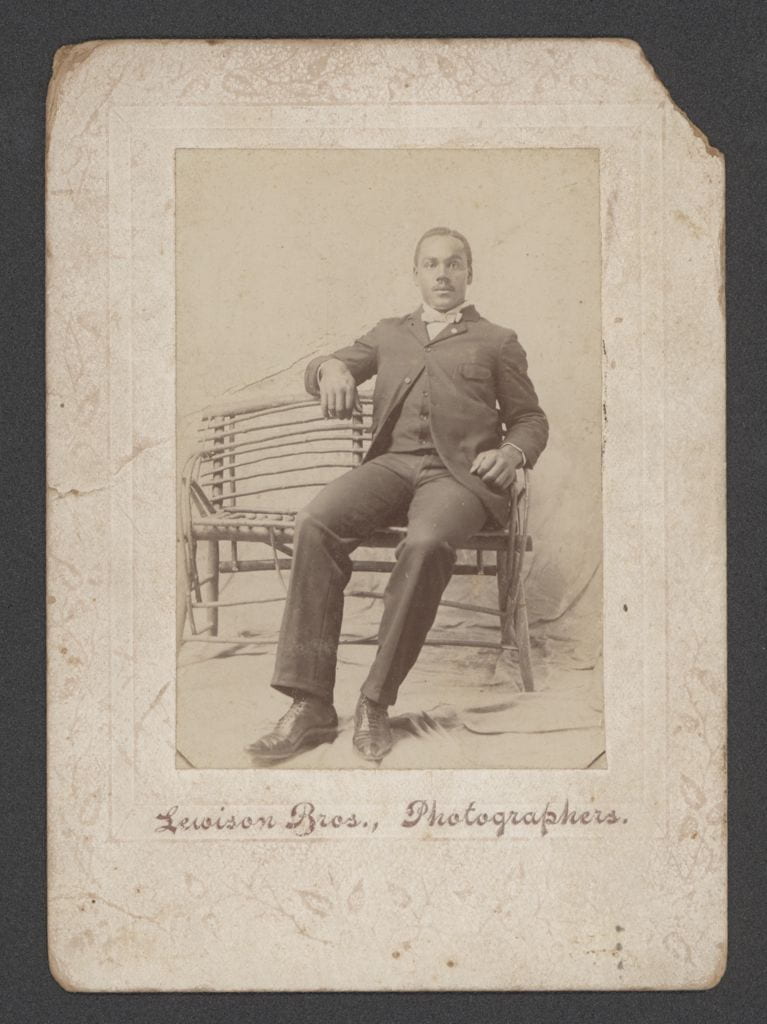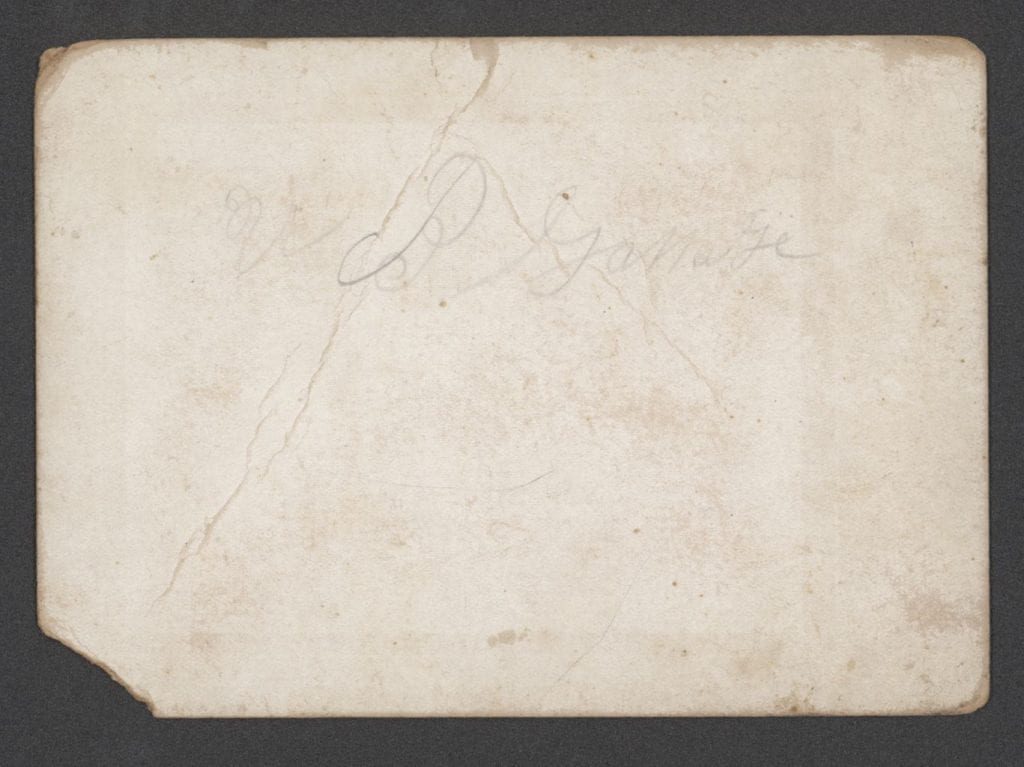
“A cabinet card photograph of an unidentified man taken by the Lewison Brothers Cabinet Card Studio, the studio was located in San Antonio, Texas. The photograph is inscribed with Lewison Brothers on the front. Facing the photographer, the man is seated on the right side of a wooden bench, with his left arm placed on the top of the backrest and his right arm placed on the armrest. Behind the man is a plain cloth backdrop, that extends onto the floor. The man has a thin mustache, a small soul patch beard directly below is lower lip, and his hair is low cut with a part on the right side. The man is dapperly dressed; and is wearing what looks to be a late 19th century well fitted, three-piece suit with a collared sack coat buttoned at the top, matching waistcoat fully buttoned, and matching trousers. The man’s attire also includes a strapped white bowtie and late Victorian era styled laced oxford shoes. The back is inscribed with WB Ganage.”
This was the finished product, my metadata for a semester long course on a collection of Black portrait photographs from the late 19th century to early 20th century. One of the photos that I selected, (shown above) was inscribed on the back with the words WB Ganage. After countless hours of research combing through census records, probate records, and other institution’s archives; still the man in the portrait remained unidentified. From his clothing to the style of the photograph, and even the very portrait studio where he sat has been named and labeled. But who was he, the person in the photograph, this person that I’ve stared at for countless hours?
I’ve been left with more questions than answers and have thought deeply about Deborah Willis’s exclamation that, “there is something about looking at images that forces [you] to question the narratives of the past.”[1] My own questions pertain to the narratives of the past that I am unaware of when looking at (possibly) W.B. Ganage’s photograph as I placed my own descriptions. Did he identify as a man? Would he have wanted his photo so widely available? What were his hopes for the future? Why did he pose for this photo? Did he have a family? Is this W.B. Ganage?
It has surprisingly been quite a visceral experience to inscribe my own interpretation and narrative onto a photograph without the full consent of the sitter within the actual photograph or their descendants. There is an interesting duality about creating metadata, and in particular as it relates to historical photographs. To view someone from the past through a photograph offers a visual representation of what was, while also bringing to light that we one may never know the full story. It is my hope that through further research the man pictured in the photograph can be positively identified in the future. However, there is such a power in naming and the making/unmaking of identity that encapsulates this present moment. I do not take it lightly that the man pictured, who at one point had a life, thoughts, and emotions has simply been relegated to (possibly) W.B. Ganage by me; someone he would have considered a stranger.
So for now, I offer my apologies to (possibly) W.B. Ganage.

[1] Deborah Willis, The Black Civil War Soldier: A Visual History of Conflict and Citizenship, (New York: New York University Press, 2021), vii.

